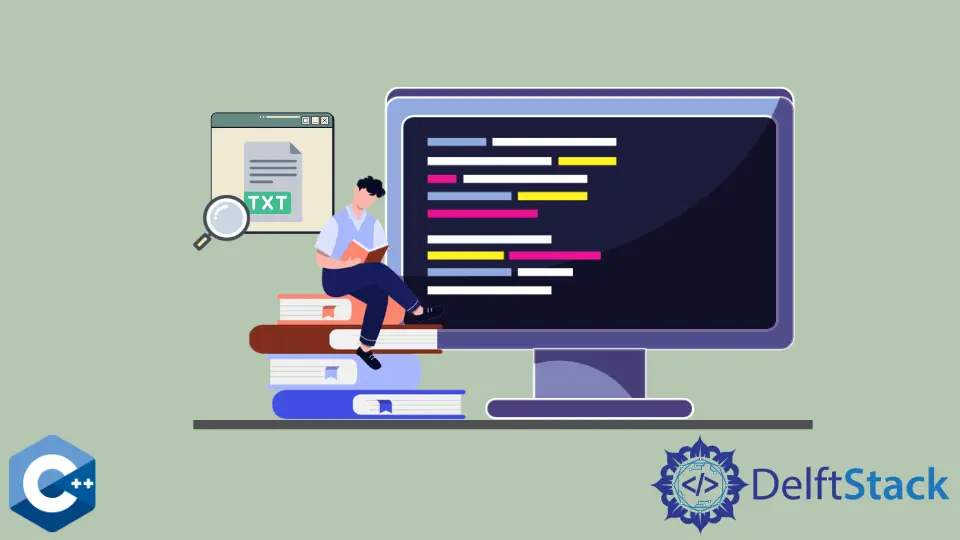C++에서 한 줄씩 파일을 읽는 방법

이 기사에서는 C++에서 한 줄씩 파일을 읽는 방법을 소개합니다.
std::getline()함수를 사용하여 한 줄씩 파일 읽기
getline()함수는 C++에서 한 줄씩 파일을 읽는 데 선호되는 방법입니다. 이 함수는 구분 기호 문자가 나타날 때까지 입력 스트림에서 문자를 읽은 다음 문자열에 저장합니다. 구분 기호는 세 번째 선택적 매개 변수로 전달되며 기본적으로 새 줄 문자 \n으로 간주됩니다.
getline 메소드는 스트림에서 데이터를 읽을 수있는 경우 0이 아닌 값을 반환하므로 파일 끝에 도달 할 때까지 파일에서 행을 계속 검색하는while 루프 조건으로 지정할 수 있습니다. 입력 스트림에 is_open 메소드와 관련된 파일이 있는지 확인하는 것이 좋습니다.
#include <fstream>
#include <iostream>
#include <vector>
using std::cerr;
using std::cout;
using std::endl;
using std::ifstream;
using std::string;
using std::vector;
int main() {
string filename("input.txt");
vector<string> lines;
string line;
ifstream input_file(filename);
if (!input_file.is_open()) {
cerr << "Could not open the file - '" << filename << "'" << endl;
return EXIT_FAILURE;
}
while (getline(input_file, line)) {
lines.push_back(line);
}
for (const auto &i : lines) cout << i << endl;
input_file.close();
return EXIT_SUCCESS;
}
C 라이브러리getline()함수를 사용하여 한 줄씩 파일 읽기
getline 함수는 파일을 한 줄씩 반복하고 추출 된 줄을 문자열 변수에 저장하는 데 유사하게 사용할 수 있습니다. 가장 큰 차이점은 나중에 세 번째 매개 변수로 전달 될FILE *객체를 반환하는fopen 함수를 사용하여 파일 스트림을 열어야한다는 것입니다.
getline 함수는nullptr로 설정된char 포인터에 저장됩니다. 이는 함수 자체가 검색된 문자에 대해 동적으로 메모리를 할당하기 때문에 유효합니다. 따라서getline 호출이 실패하더라도 프로그래머가char 포인터를 명시 적으로 해제해야합니다.
또한 함수를 호출하기 전에 size_t유형의 두 번째 매개 변수를 0으로 설정하는 것이 중요합니다. getline기능의 자세한 매뉴얼을보실 수 있습니다.
#include <iostream>
#include <vector>
using std::cerr;
using std::cout;
using std::endl;
using std::string;
using std::vector;
int main() {
string filename("input.txt");
vector<string> lines;
char* c_line = nullptr;
size_t len = 0;
FILE* input_file = fopen(filename.c_str(), "r");
if (input_file == nullptr) return EXIT_FAILURE;
while ((getline(&c_line, &len, input_file)) != -1) {
lines.push_back(line.assign(c_line));
}
for (const auto& i : lines) {
cout << i;
}
cout << endl;
fclose(input_file);
free(c_line);
return EXIT_SUCCESS;
}
Founder of DelftStack.com. Jinku has worked in the robotics and automotive industries for over 8 years. He sharpened his coding skills when he needed to do the automatic testing, data collection from remote servers and report creation from the endurance test. He is from an electrical/electronics engineering background but has expanded his interest to embedded electronics, embedded programming and front-/back-end programming.
LinkedIn Facebook